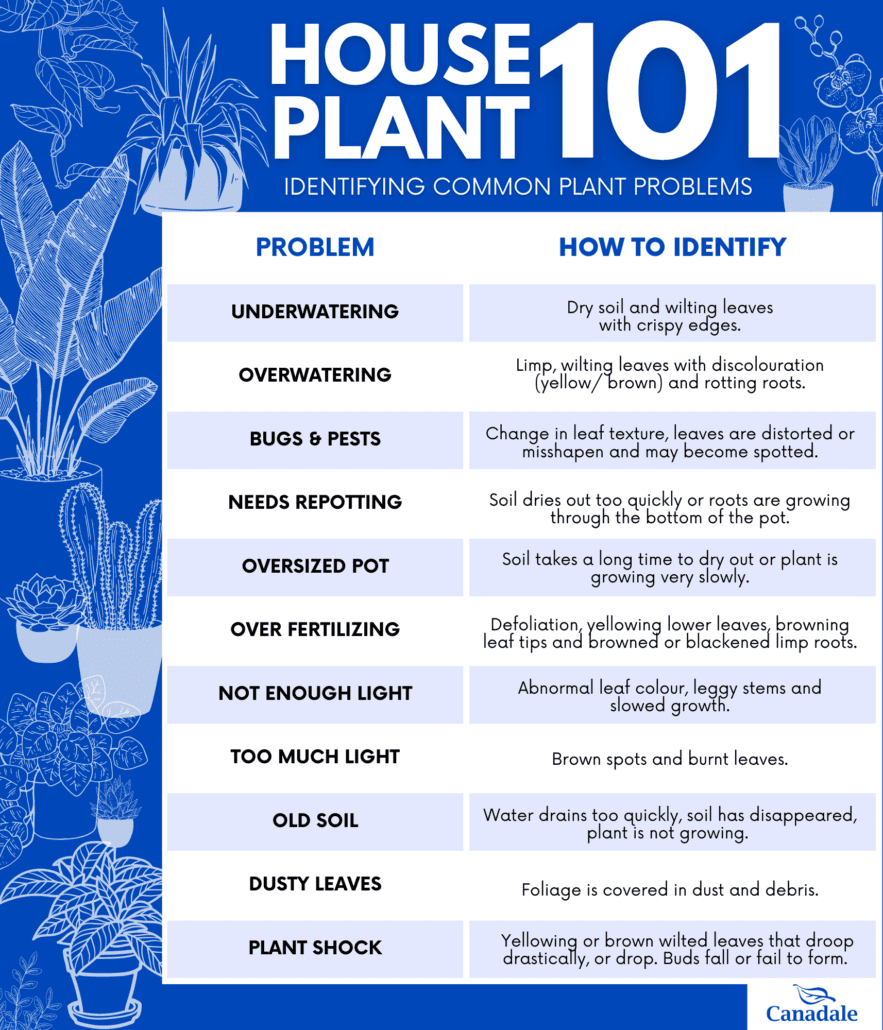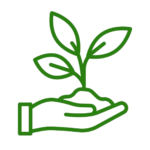Indoor plants can brighten up any space and improve air quality. But sometimes, they face soil issues that can hinder their growth.
Understanding common indoor plant soil problems can help you keep your plants healthy and thriving. Indoor plants rely heavily on their soil for nutrients and stability. Poor soil conditions can lead to stunted growth, yellowing leaves, and even plant death.
Common issues include poor drainage, compacted soil, and nutrient deficiencies. Overwatering or using the wrong type of soil can also cause problems. Knowing how to identify and address these issues ensures your plants stay vibrant and strong. In this blog, we will explore the most common indoor plant soil issues and how to fix them. This knowledge can save your plants and keep your indoor garden flourishing.

Credit: matsuoutdoorsmanshow.com
Identifying Common Soil Issues
Indoor plants need healthy soil to thrive. Identifying common soil issues can help maintain plant health. Understanding soil problems can lead to better plant care. Below are some of the most common soil issues you might encounter.
Soil Compaction
Soil compaction is a common issue. Compacted soil prevents roots from growing. It stops water and nutrients from reaching the plant. Signs of compacted soil include:
- Water pooling on the surface
- Slow plant growth
- Roots growing in circles within the pot
To fix soil compaction, you can:
- Gently loosen the soil with a fork
- Repot the plant with fresh, well-draining soil
- Use a pot with drainage holes
Poor Drainage
Poor drainage is another common soil issue. It can lead to root rot and other diseases. Signs of poor drainage include:
- Soil that stays wet for long periods
- Yellowing leaves
- Foul smell coming from the soil
To improve drainage, consider the following tips:
- Use a pot with proper drainage holes
- Add pebbles or gravel at the bottom of the pot
- Mix sand or perlite into the soil
By identifying and addressing these common soil issues, you can help your indoor plants stay healthy and vibrant.
Signs Of Overwatering
Overwatering is a common issue that can harm indoor plants. Recognizing the signs early can save your plant from serious damage. Let’s explore the signs of overwatering, focusing on yellowing leaves and root rot.
Yellowing Leaves
Yellowing leaves are often the first sign of overwatering. When plants get too much water, their roots can’t breathe. This stress causes the leaves to turn yellow. If you see yellow leaves, check the soil moisture. If it’s wet, you may be overwatering. Reduce the watering frequency to help the plant recover.
Root Rot
Root rot is another sign of overwatering. This occurs when roots sit in water for too long. Waterlogged soil causes roots to rot, turning them brown or black. Affected roots become mushy and weak. To check for root rot, gently remove the plant from its pot. Examine the roots closely. If they are rotting, prune the damaged roots. Repot the plant in fresh, well-draining soil.
Signs Of Underwatering
Indoor plants need proper care to thrive. One common issue is underwatering. Recognizing the signs can help you save your plants. Watch for these key indicators to ensure your plants stay healthy.
Wilting
Wilting is a clear sign of underwatering. Plants lose their firm structure. Leaves and stems droop. They may appear lifeless and weak. Touch the plant to check for firmness. A firm plant is usually well-hydrated. A limp plant needs water.
Dry Soil
Dry soil is another sign of underwatering. Check the top layer of soil. If it feels dry, your plant needs water. Use your finger to test the moisture. Insert it about an inch into the soil. If it feels dry at that depth, it’s time to water your plant. Soil that is too dry can lead to root damage. This makes it hard for the plant to absorb water.
Nutrient Deficiencies
Indoor plants are a great way to improve your living space. But they can face many issues. Nutrient deficiencies are common problems that impact plant health. These deficiencies can lead to various symptoms. Understanding these symptoms can help you diagnose and treat your plants.
Yellow Leaves
Yellow leaves are a sign of nutrient deficiency. This usually means your plant lacks nitrogen. Nitrogen is vital for healthy leaf growth. When plants lack nitrogen, older leaves turn yellow first. This is because the plant moves nitrogen to new growth. Iron deficiency can also cause yellow leaves. Unlike nitrogen deficiency, iron affects new leaves first. They turn yellow, but the veins remain green.
Slow Growth
Slow growth indicates your plant may lack essential nutrients. Plants need phosphorus for strong roots and flowers. Without enough phosphorus, plants grow slowly. They may also have weak stems and small leaves. Another important nutrient is potassium. Potassium helps plants resist disease and grow properly. A lack of potassium can result in poor growth and weak stems.
| Symptom | Potential Nutrient Deficiency |
|---|---|
| Yellow Leaves | Nitrogen, Iron |
| Slow Growth | Phosphorus, Potassium |
To help your plants, use a balanced fertilizer. Check the N-P-K ratio. This stands for nitrogen, phosphorus, and potassium. A good ratio is 10-10-10. This ensures your plant gets all the nutrients it needs.
Soil Ph Imbalance
Soil pH imbalance can disrupt indoor plant health. The pH scale measures acidity and alkalinity of soil. A balanced pH helps plants absorb nutrients. Imbalanced pH leads to nutrient deficiencies. Understanding soil pH is crucial for thriving plants.
Acidic Soil
Acidic soil has a pH below 7. Many indoor plants dislike this. Signs of acidic soil include yellow leaves and stunted growth. Test the soil pH with a kit. If too acidic, add lime to neutralize it. Monitor pH regularly to maintain balance.
Alkaline Soil
Alkaline soil has a pH above 7. This can hinder nutrient absorption. Common symptoms are yellowing leaves and poor growth. Testing soil pH helps identify this issue. To lower pH, add sulfur or peat moss. Regular checks ensure a balanced pH.
:strip_icc()/houseplants-you-cant-kill-Final-180244527c60405fb9668911dab14857.jpg)
Credit: matsuoutdoorsmanshow.com
Fungal And Bacterial Issues
Indoor plants bring life and color to any space. But they can sometimes face soil issues. One common problem is fungal and bacterial issues. These can harm your plants and affect their growth. Let’s look at some common signs, starting with mold growth and foul smell.
Mold Growth
Mold in plant soil can be a big problem. It often shows up as white or green patches on the soil surface. Mold thrives in damp and warm conditions. Overwatering and poor drainage are common causes. Here are some steps to prevent mold growth:
- Water plants only when the top inch of soil is dry.
- Ensure pots have drainage holes.
- Use a well-draining soil mix.
- Provide good air circulation around plants.
Foul Smell
A bad smell from the soil is a sign of bacterial issues. This often means the soil is too wet. Overwatering can lead to root rot and other problems. Here are some tips to avoid foul smells:
- Check the soil before watering.
- Use pots with drainage holes.
- Avoid letting plants sit in water.
- Use a soil mix with good drainage.
If you notice a foul smell, try repotting the plant. Use fresh soil and clean the pot thoroughly.
Pest Infestations
Indoor plants bring life to any room, but soil issues can arise. Pest infestations are a common problem that can harm your plants. These pests not only affect the soil but also the overall health of your plants. Understanding the types of pests and how to deal with them is crucial for maintaining healthy indoor plants.
Soil Gnats
Soil gnats are small, flying insects that thrive in moist soil. They can be annoying and harm young plants. These pests lay their eggs in the soil, and the larvae feed on organic matter. Overwatering your plants often leads to soil gnat infestations. To control them, let the soil dry out between waterings. You can also use yellow sticky traps to catch adult gnats.
Root Aphids
Root aphids are tiny insects that feed on plant roots. They can stunt plant growth and cause yellowing leaves. These pests are often found in the root zone and are hard to spot. To identify them, look for white, waxy residue on the roots. To control root aphids, use a soil drench with insecticidal soap. Regularly check your plants for signs of infestation.

Credit: katrinaleedesigns.com
Improving Soil Health
Indoor plants need healthy soil to thrive. Healthy soil provides nutrients, retains moisture, and supports root growth. Let’s explore ways to improve soil health.
Composting
Composting adds nutrients to the soil. It involves breaking down organic waste into rich compost. Here’s how:
- Collect kitchen scraps like vegetable peels and coffee grounds.
- Layer brown materials such as dry leaves and paper.
- Turn the pile to aerate and speed up decomposition.
- Add water to keep the compost moist.
After a few months, you’ll have nutrient-rich compost. Mix it with your plant soil.
Using Mulch
Mulch helps retain soil moisture and prevents weeds. Use organic mulch for added nutrients. Here are some options:
| Type of Mulch | Benefits |
|---|---|
| Wood Chips | Retains moisture, adds organic matter |
| Straw | Prevents weeds, decomposes quickly |
| Pine Needles | Acidifies soil, prevents compaction |
Apply a thin layer of mulch around the base of your plants. Replace it as needed to keep the soil healthy.
Frequently Asked Questions
What Causes Indoor Plant Soil To Become Compacted?
Compacted soil is often caused by improper watering, lack of aeration, and infrequent repotting. Over time, soil particles can become tightly packed, reducing airflow and water drainage, which negatively affects root health.
How Can I Improve Drainage In Indoor Plant Soil?
To improve drainage, add materials like perlite, sand, or small gravel to the soil mix. These materials help create air pockets, allowing water to flow through more easily and preventing root rot.
Why Does Indoor Plant Soil Develop Mold?
Mold in soil is usually due to overwatering and poor air circulation. Ensure the soil dries out between waterings and improve ventilation around the plant to prevent mold growth.
What Are Signs Of Poor Soil Quality In Indoor Plants?
Signs of poor soil quality include yellowing leaves, stunted growth, and a foul odor. These symptoms indicate that the soil may be lacking nutrients or is not draining properly.
Conclusion
Caring for indoor plants can be tricky. Soil issues are common and frustrating. Proper watering and good drainage help a lot. Use the right soil mix for each plant. Watch out for pests and diseases. Regularly check your plants and their soil.
Healthy soil means happy plants. Keep learning and observing. With some effort, your indoor garden will thrive. Happy planting!



